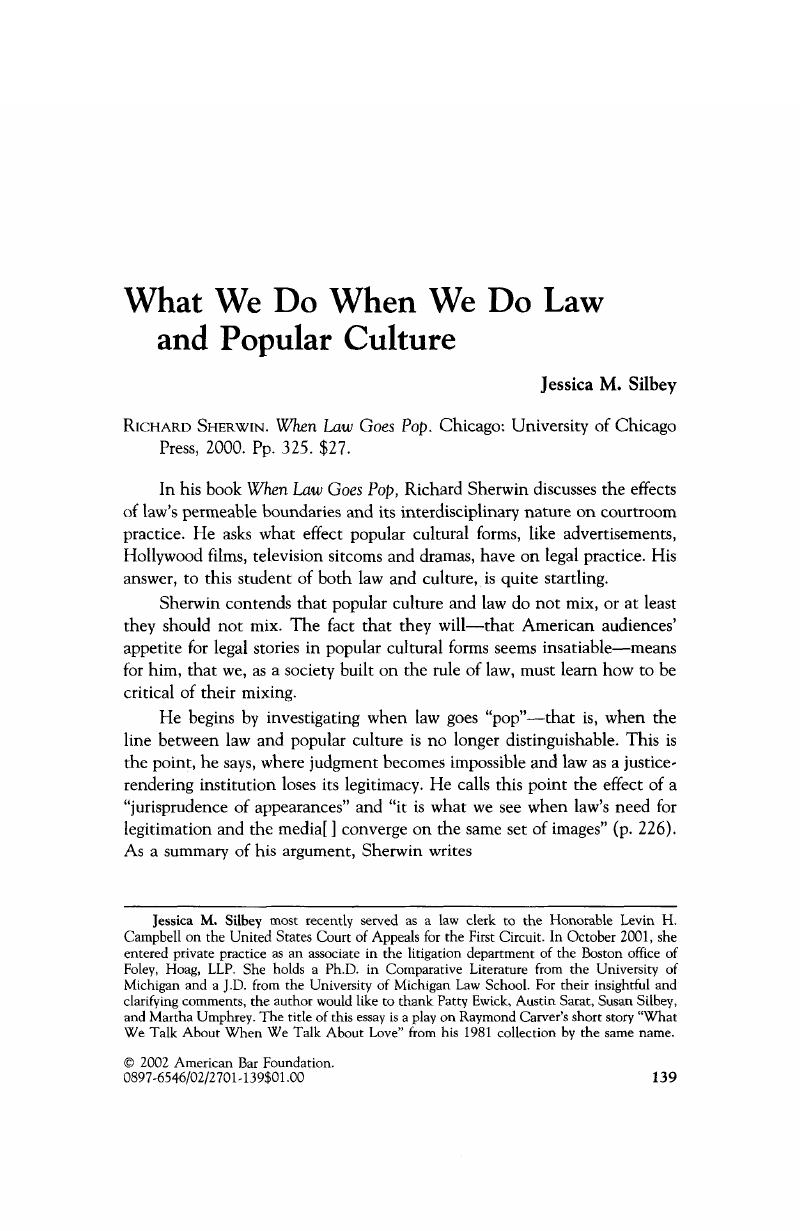Crossref Citations
This article has been cited by the following publications. This list is generated based on data provided by Crossref.
Cotterrell, Roger
2004.
Law in Culture.
Ratio Juris,
Vol. 17,
Issue. 1,
p.
1.
Williams, Juliet A.
2005.
On the Popular Vote.
Political Research Quarterly,
Vol. 58,
Issue. 4,
p.
637.
Turkel, Gerald
2010.
Cape Fear and the Verdict: Law, Morality and Violence.
Humanity & Society,
Vol. 34,
Issue. 2,
p.
169.
Burgess, Susan
2011.
YouTube on Masculinity and the Founding Fathers: Constitutionalism 2.0.
Political Research Quarterly,
Vol. 64,
Issue. 1,
p.
120.
Bogoch, Bryna
and
Holzman-Gazit, Yifat
2011.
Clashing Over Conversion: “Who is a Jew” and Media Representations of an Israeli Supreme Court Decision.
International Journal for the Semiotics of Law - Revue internationale de Sémiotique juridique,
Vol. 24,
Issue. 4,
p.
423.
Carrillo, Jo
2011.
Law, Society, and History.
p.
69.
Delpeuch, Thierry
Dumoulin, Laurence
and
de Galembert, Claire
2014.
Sociologie du droit et de la justice.
p.
271.
Sargent, Alethea
2016.
Visions of Vindication: Law, Affect, and the Intimate Public of Judge Judy.
Signs: Journal of Women in Culture and Society,
Vol. 41,
Issue. 3,
p.
653.
Dumoulin, Laurence
and
Licoppe, Christian
2017.
Grasping the Discrete Link between Filming and Videoconferencing in the Courtroom. Reflections from the French Case*.
Revista Crítica de Ciências Sociais,
p.
115.
Dubowska, Marta
2021.
Jurisprudence Popularized: Between Law, Literature, and Film.
Archiwum Filozofii Prawa i Filozofii Społecznej,
p.
21.
Lam, Anita
2021.
Decoding the Crime Scene Photograph: Seeing and Narrating the Death of a Gangster.
International Journal for the Semiotics of Law - Revue internationale de Sémiotique juridique,
Vol. 34,
Issue. 1,
p.
173.



